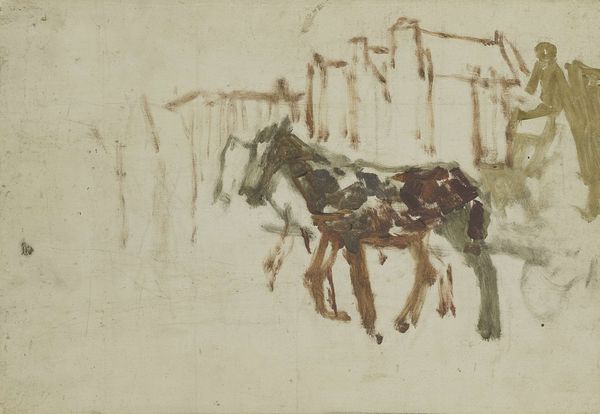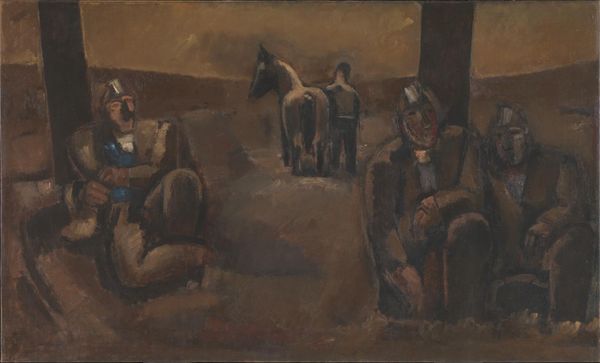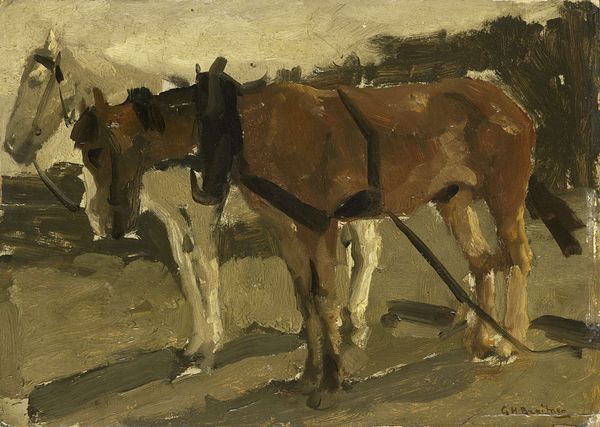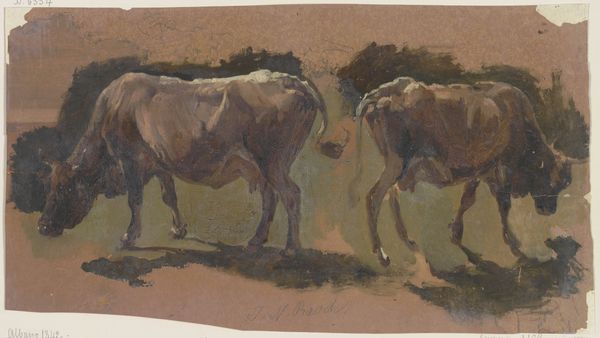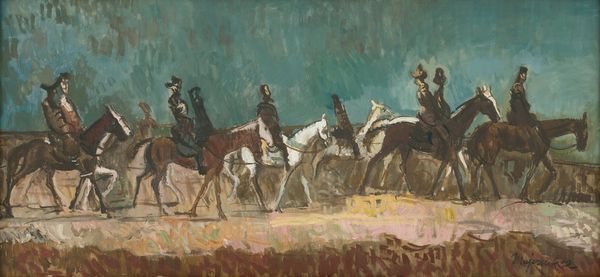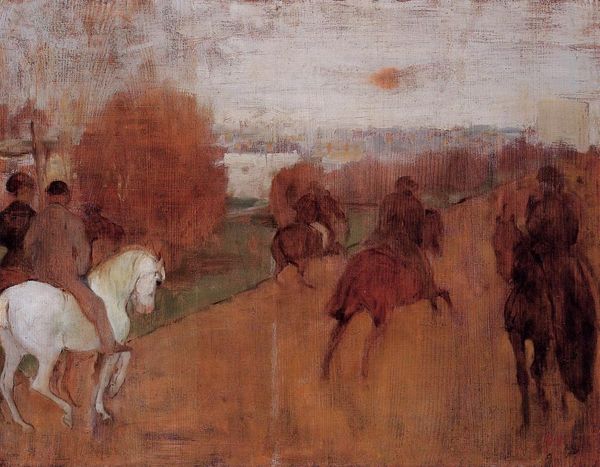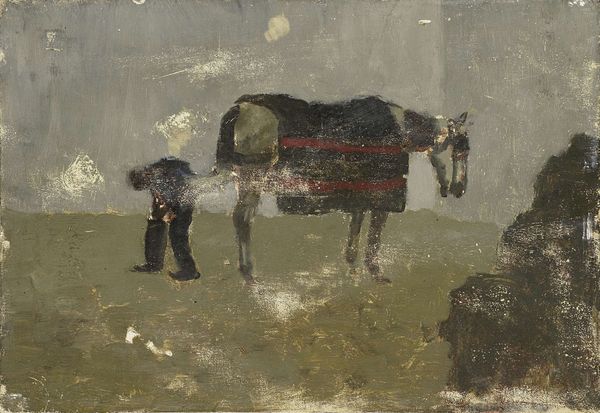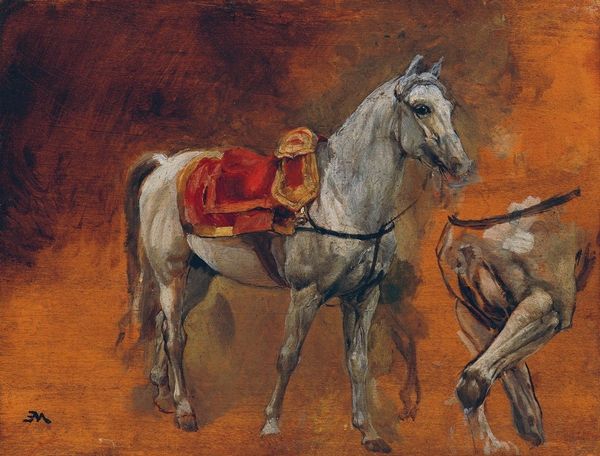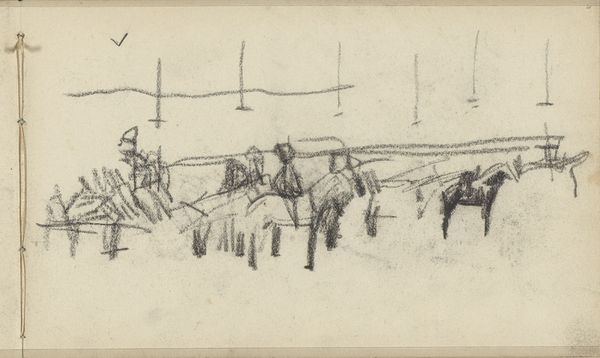
drawing, oil-paint, pencil
#
drawing
#
figurative
#
oil-paint
#
landscape
#
charcoal drawing
#
oil painting
#
pencil
#
watercolor
#
realism
Copyright: Public Domain: Artvee
Curator: Thomas Eakins created this oil on canvas study around 1887 in preparation for a larger work titled "Cowboys in the Badlands." What strikes you initially about the composition? Editor: Dust. Just, the whole thing feels coated in a fine layer of dust and quiet resignation. They're figures dissolving into the landscape rather than conquering it. Curator: An astute observation. Eakins was, of course, deeply concerned with Realism and its fidelity to observable forms and conditions. Note how the palette serves to mute vibrant action—almost a tonal study in browns, greens, and grays. Editor: Right, no heroic posturing here. And yet, that blurriness, the way the paint's been so loosely applied, it feels so immediate, almost like catching a fleeting memory. More feeling, maybe, than straight reportage. Curator: Indeed, the visible brushwork and muted palette could be interpreted as signaling a shift in artistic intent away from objective recording and closer to expressing subjective impressions. Semiotically, consider the hat, the set of the figure’s posture, their tools: aren’t these symbols? Editor: Okay, now I feel you on symbols and feeling. Look how even the landscape seems to droop with weariness, everything blending into a somber monotone. The cowboys and the earth--equal players. Curator: Precisely. This interplay between man and nature suggests a dialogue, not of mastery, but perhaps of endurance and integration. Editor: I like that. Makes me think about stories not told. Of weather-beaten faces, of journeys taken with no real map. You can feel their vulnerability within this expanse. Curator: And ultimately, as a study, the visible lack of refinement actually underscores a certain rawness—both of process and subject. The aesthetic roughness seems appropriate somehow. Editor: Very much so. What seemed unfinished at first viewing now feels perfectly, hauntingly, complete. A good, very quiet kind of painting, this. Curator: Precisely the lasting impact one feels when assessing the relationships between form and context.
Comments
No comments
Be the first to comment and join the conversation on the ultimate creative platform.

